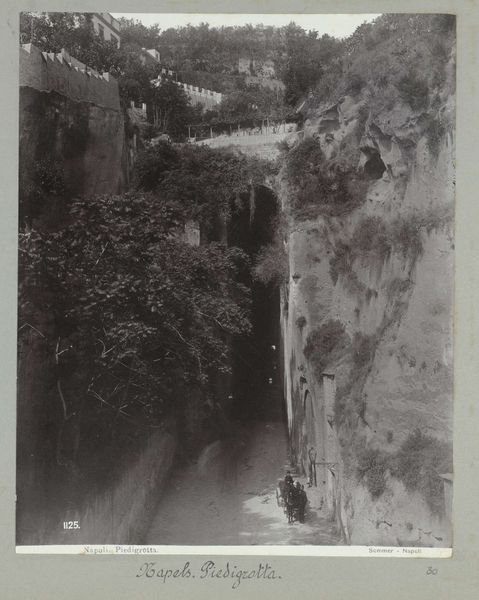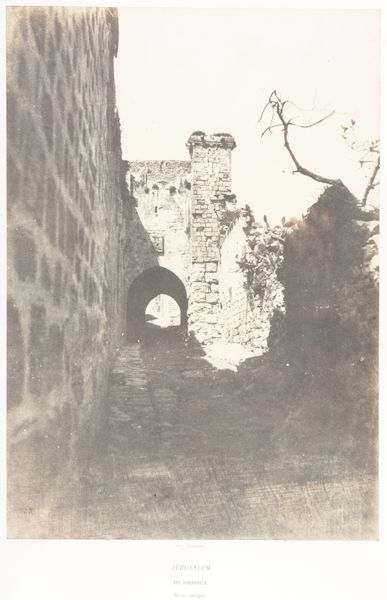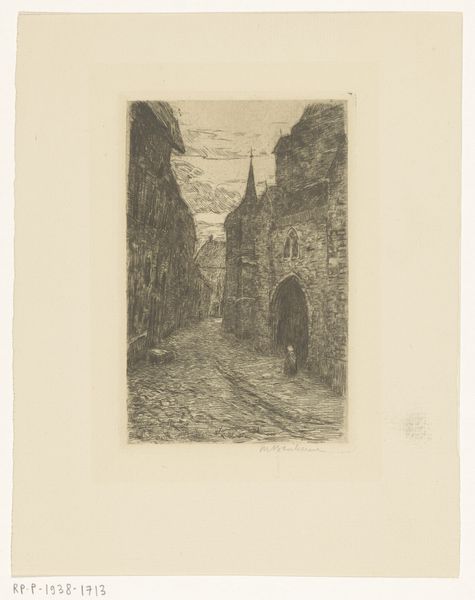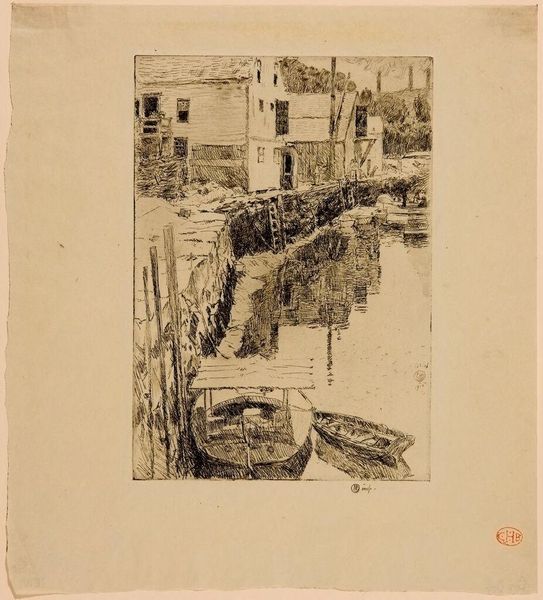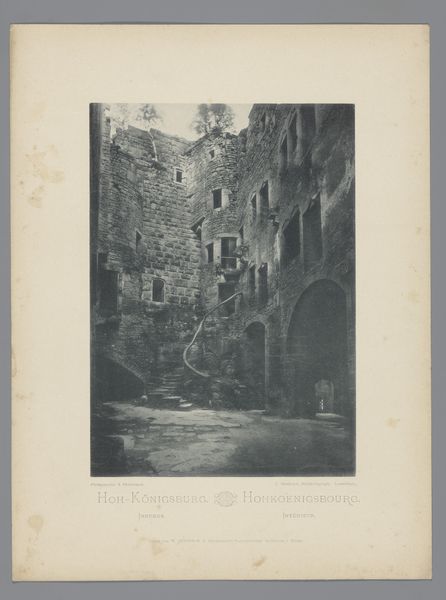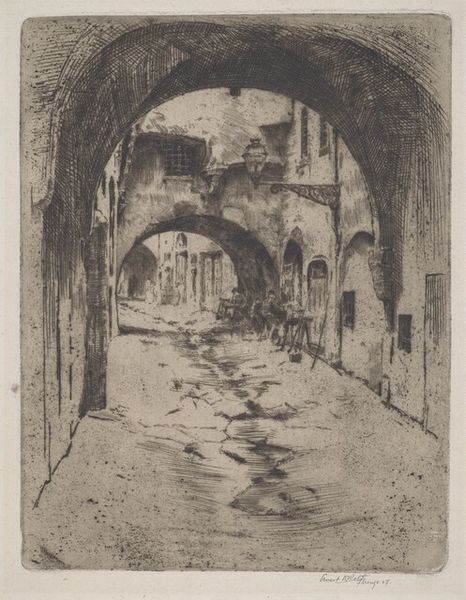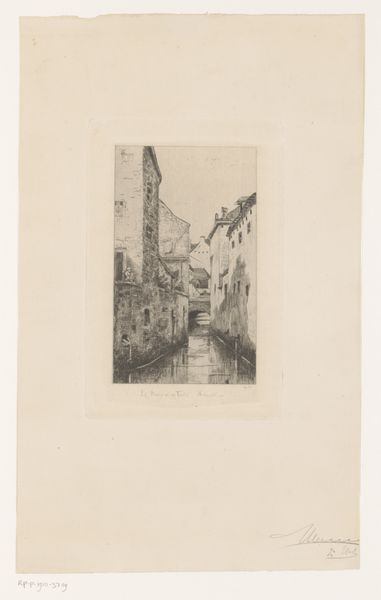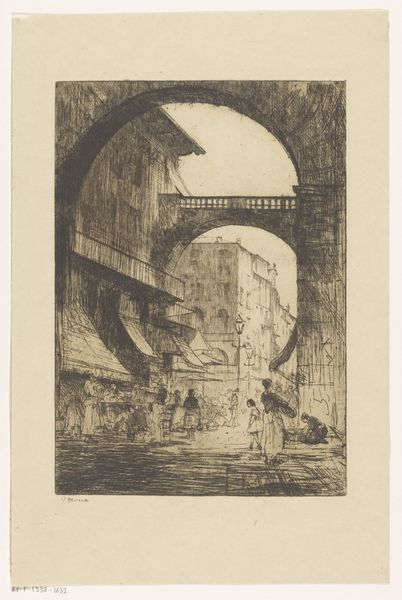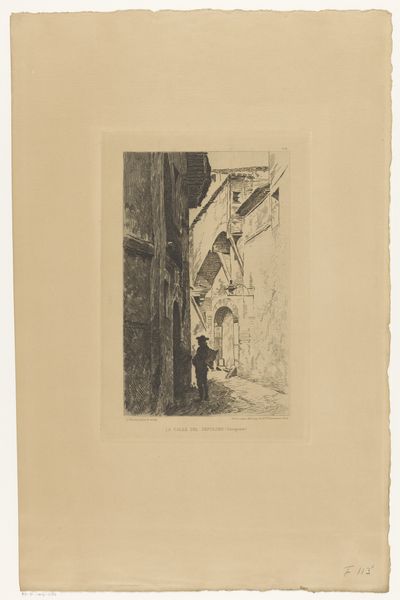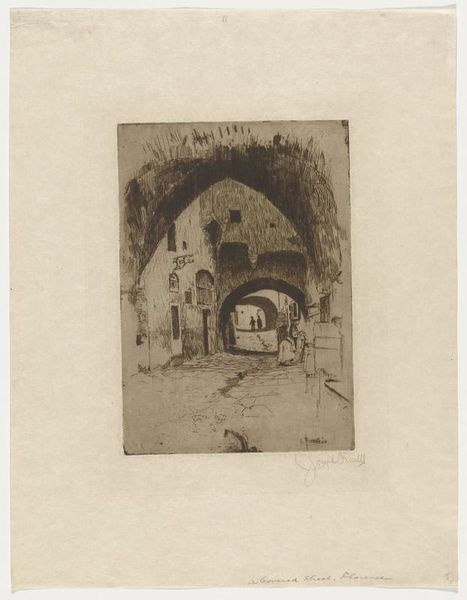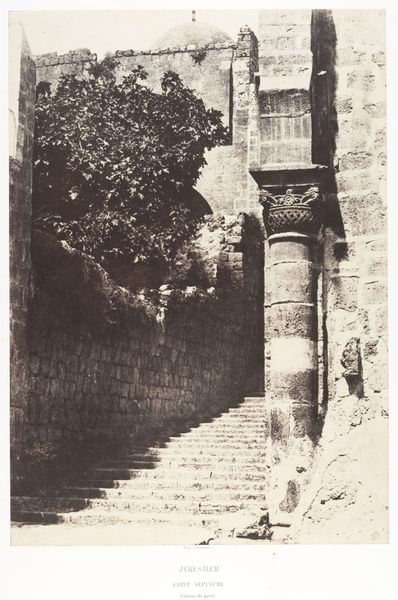
print, etching
# print
#
etching
#
landscape
#
geometric
#
cityscape
#
realism
Dimensions: 12 9/16 x 8 1/2 in. (31.91 x 21.59 cm) (plate)17 1/8 x 13 5/16 in. (43.5 x 33.81 cm) (sheet)
Copyright: No Copyright - United States
Curator: This etching, "Up and Down in Siena" by Joseph Pennell, dating to 1883, depicts a street scene in the Italian city of Siena. It's part of the collection at the Minneapolis Institute of Art. What strikes you first about it? Editor: It’s the almost oppressive weight of the architecture. The city looms, doesn’t it? And that deep, shadowed archway—it feels like a gateway but also a barrier. This depiction certainly brings up issues of spatial inequality. Curator: Precisely. Notice how Pennell uses perspective, not just to convey depth but also to lead our eye. The archway frames a deeper view into the city, but the darkness within the arch seems to swallow the people travelling on the road. Editor: Absolutely, and the cobblestone road and arch create a frame for a system where movement through urban landscapes creates unequal encounters. The composition focuses on figures that are almost dwarfed, insignificant in relation to this urban construction of geometric volumes and controlled passageways. Curator: Pennell was deeply invested in the imagery of place, capturing not just its visual attributes, but something deeper: the spirit of the city. Think about how the arch acts as a liminal space. Is it just a bridge, or is it something more symbolic, connecting different aspects of Sienese life? Editor: It reminds me of how urban planning often reproduces existing inequalities. While beautiful, there's something unsettling about this romanticized image when considering access to resources. And it is certainly difficult to dismiss its connections to gender and class dynamics and spatial segregation within that period. Curator: A point well-taken. Pennell wasn’t explicitly critiquing those dynamics, but your insight points to a vital dialogue we can have with historical images. His skillful rendering of shadow and light suggests how buildings acquire character. It is that quality of depth and density of human use that evokes enduring emotional responses from people who pass under such monumental constructs. Editor: Reflecting on "Up and Down in Siena" from today's viewpoint allows us to discuss both the aesthetic beauty and historical contexts shaping that image. Curator: For me, it highlights how the city continues to evolve, its layers of history constantly reshaping our understanding. The visual language connects us to the past.
Comments
No comments
Be the first to comment and join the conversation on the ultimate creative platform.


